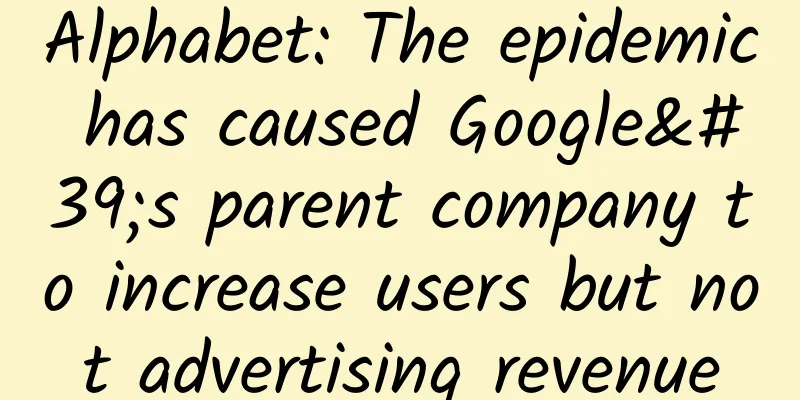Alphabet: The epidemic has caused Google's parent company to increase users but not advertising revenue

|
Impact of COVID-19 on product usage
Impact of COVID-19 on advertising revenue Overall, the company's advertising revenue in March was affected by the epidemic, but its non-advertising business was not affected. The advertising business grew strongly in the first two months of 1Q, but fell significantly in March. Affected by the epidemic, the company delayed the launch of advertising product functions, giving priority to supporting customers and merchants, and announced last week that merchants can use Google Shopping to display products for free. The company is confident in revenue recovery: because search is the best way to ROI, it is easy to pause and start; the company's revenue is increasingly diversified, such as cloud computing, which is relatively unaffected by the epidemic. G suite customers exceed 6 million. There are 2.5 billion monthly active Play devices worldwide. Financial Performance: At the company level, total revenue was $41.2 billion, up 13% year-on-year, and up 15% year-on-year after removing the impact of exchange rates. Growth was driven by search, YouTube, and cloud computing. Advertising revenue was negatively affected by the COVID-19 pandemic. Total costs, including TAC, were $19 billion, up 19% year-over-year, and other costs were $11.5 billion, up 26% year-over-year, mainly affected by Google's cost growth, including data center and other operating expenses and content expense amortization. Operating expenses were $14.2 billion, with headcount growth being the largest driver of growth in R&D and marketing expenses. Operating profit was $8 billion, down 4% year-on-year. Excluding the impact of the EU fine, operating profit margin was 19%. Net income was $6.8 billion, or $9.87 per share. Capital expenditures were $6 billion, operating cash flow was $11.5 billion, free cash flow was $5.4 billion, and cash and marketable securities were $117 billion. Google's business revenue was $41 billion, up 14% year-on-year. Google search and other revenue was $24.5 billion, up 9% year-on-year, reflecting strong growth in the first two months and a year-on-year decline of more than ten percentage points in March. Despite the increase in user searches, commercial search interest has declined, which in turn has affected search advertising revenue. YouTube's advertising revenue was $4 billion, up 33% year-over-year. In the first two months, both brand and performance advertising revenue grew strongly. Brand advertising began to come under pressure in mid-March, while performance advertising remained strong throughout the quarter. Affiliate advertising revenue was $5.2 billion, up 4% year-over-year, with healthy year-over-year growth in the first two months and a low double-digit decrease in March. Google Cloud revenue was $2.8 billion, up 52% year-over-year. GCP grew significantly, G Suite remained strong, and the number of seats and per capita revenue contribution continued to grow. Google's other revenue was US$4.4 billion, up 23% year-on-year, mainly from Youtube's non-advertising revenue (membership growth) and Play. TAC was $7.5 billion, accounting for 22% of total advertising revenue, up 9% year-over-year. TAC's share of advertising revenue has slightly decreased year-over-year, reflecting the growth of Google's on-site advertising. Google's business operating profit was $9.3 billion, up 1% year-on-year, with an operating profit margin of 23%. Other Bets business had revenue of $135 million, mainly from Fiber and Verily, and an operating loss of $1.1 billion. |
>>: In addition to cleanliness, giving the elderly a bath has unexpected benefits!
Recommend
How to treat endocrine disorders with upper heat and lower cold
Each of us has different physical conditions. Som...
Aphthous ulcers
Author: Guan Zhiyu, Wang Guanxun, Xu Jingzhi, Che...
What are the main varieties of chrysanthemum? How many calories does chrysanthemum contain?
Chrysanthemum chrysanthemum is also rich in vitam...
How much bleeding does a miscarriage cause?
The amount of bleeding in a spontaneous abortion ...
Harm of uterine cold to women
The so-called uterine cold refers to the lower ab...
Reasons for delayed menstruation in little girls
There are many reasons why little girls may have ...
Methods for women to delay menopause
I believe that all of you have watched a TV serie...
Is it really effective to take stomach medicine before drinking? Fujian pharmacist's "stomach protection" tips, super suitable for you during the Chinese New Year, quickly download →
Approaching the Chinese New Year Visiting relativ...
What is camellia? What are the functions of camellia?
Camellia, also known as tea flower, is a plant of...
What are the reactions of women during pregnancy
Many young couples find it difficult to discover ...
The harm of girls not changing their underwear
Personal hygiene has always been an issue that pa...
Can I eat eyefish during menstruation?
My former colleague no longer works in our compan...
Pregnant woman belly pillow
For pregnant mothers, sleeping with a big belly i...
What are the symptoms of poor uterine contraction?
Poor uterine contraction is a common problem amon...









